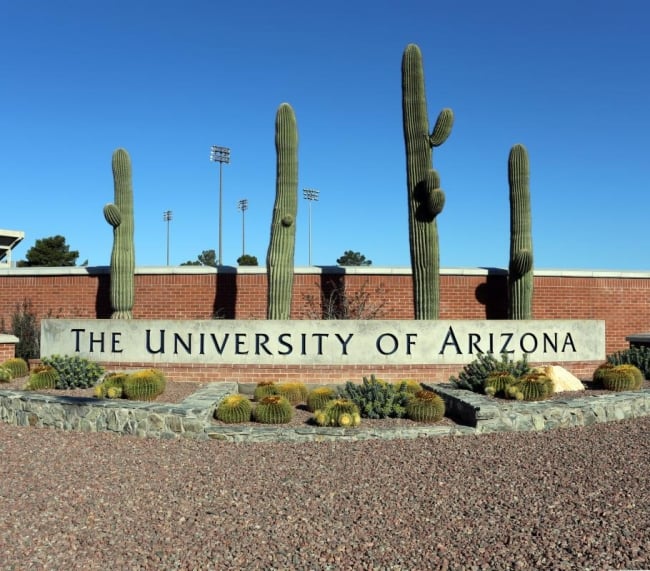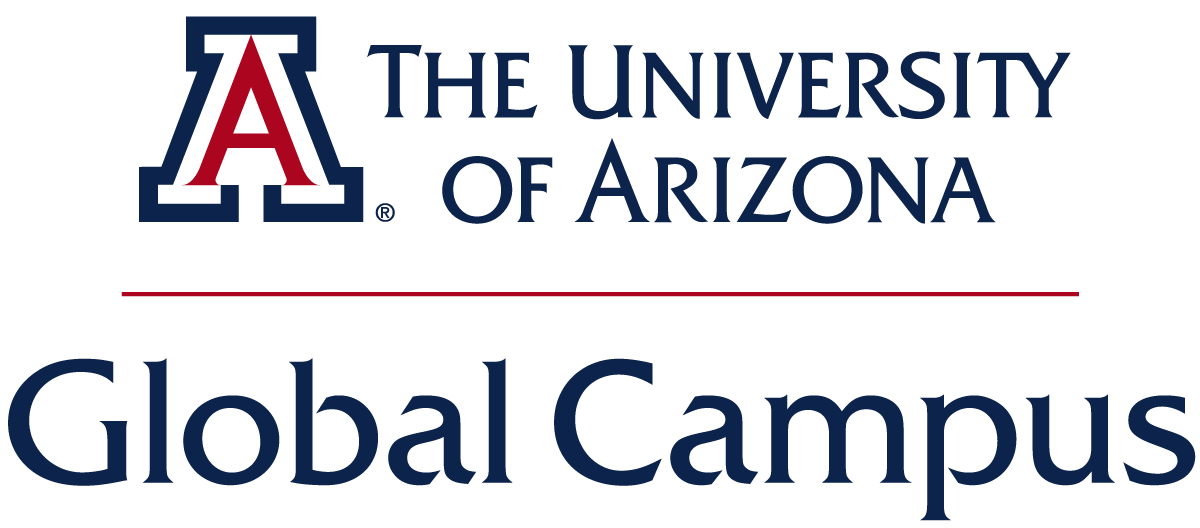You have /5 articles left.
Sign up for a free account or log in.

istock.com/wellesenterprises
The University of Arizona is moving online in a big way with a deal that could shake up the online education market and could signal more changes to come.
The public land-grant university announced Monday that it will acquire Ashford University -- a fully online university that enrolls roughly 35,000 students.
As part of what it called a "transformational" definitive agreement, the University of Arizona will create a new nonprofit entity called the University of Arizona Global Campus that will buy Ashford University for $1.
The University of Arizona Global Campus will be a nonprofit institution affiliated with the University of Arizona. The new online university will maintain its own leadership, faculty members and academic programs.
It will also be accredited separately. Ashford University is currently accredited by the Western Association of Schools and Colleges (WASC) Senior College and University Commission, while the University of Arizona is accredited by the Higher Learning Commission.
Zovio, the publicly traded parent company of Ashford University, will support the University of Arizona Global Campus through a long-term strategic services agreement. Under the arrangement, Zovio will be deeply involved in running the new institution's online programs -- managing marketing, student recruitment and retention, student success, coaching, financial services, instructional design, and technology. Faculty members will retain ownership of course curricula and lead decisions about programs and courses the university offers.
 The proposed deal is 15 years long with an initial term of seven years, said Andrew Clark, founder, president and CEO of Zovio, formerly known as Bridgepoint Education.
The proposed deal is 15 years long with an initial term of seven years, said Andrew Clark, founder, president and CEO of Zovio, formerly known as Bridgepoint Education.
The University of Arizona Global Campus will acquire Ashford for $1 but will share 19.5 percent of its tuition revenue with Zovio -- a similar arrangement to the deal between Purdue University and Kaplan University that resulted in the formation of Purdue University Global.
Global Campus is guaranteed $225 million in revenue over 15 years and will be reimbursed for operating costs. A $37.5 million upfront payment from Zovio is included in that figure, according to reporting by The Wall Street Journal.
The Purdue-Kaplan deal, which was announced in 2017, was as controversial as it was revolutionary. While some viewed the arrangement as an exciting innovation in public higher education, others saw it as a serious reputational risk for Purdue. The news from Arizona provoked a similar mix of attention and concern Monday.
Several business analysts praised the deal as a positive development for Zovio, but many of Arizona's faculty members lamented potential damage to their university's good name. They questioned why there was not more widespread consultation with faculty members before a final decision was reached. They also questioned the wisdom of partnering with Ashford, an institution that has been accused of predatory student recruitment practices. (See related article here.)
A Long Journey to Nonprofit
The decision to sell Ashford marks the conclusion of a complex and multiyear process to turn Ashford from a for-profit into a nonprofit university.
Online Learning: a Special Report
Tasked with helping your college or university develop or enhance a digital learning strategy? Check out "Taking Colleges Online: How Smart Institutions and Their Leaders Can Approach Online Education Now and in a Postcoronavirus World," Inside Higher Ed's deeply researched special report. Download a free preview or buy the report here.
Ashford announced its intention to become a nonprofit in 2018, but the path has not been straightforward. While the Internal Revenue Service and the WASC Senior College and University Commission blessed the conversion, a review by the U.S. Department of Education, published in October 2019, threw a wrench in the works.
Grand Canyon University has faced similar hurdles in its bid to convert to a nonprofit. The Education Department ruled in November 2019 that Grand Canyon did not meet requirements to become a nonprofit, despite the university publicly announcing that it had already completed its conversion. Grand Canyon's plan was to become a nonprofit that would outsource many administrative functions to a separate for-profit services corporation. Regulators questioned the relationship between these two entities, deciding the ties were too close for comfort.
To complete the conversion of Ashford to a nonprofit, the department said it would require a letter of credit equal to 25 percent of the federal Title IV funds the university received during 2018, approximately $103 million. The letter of credit is a guarantee that can be used to protect students and taxpayers in the event the institution is unable to repay money it owes the government. A similar condition was imposed when the University of Phoenix changed ownership in 2016.
Several institutions offered to purchase Ashford, but Clark told investors earlier this year that the company had decided to proceed with its original separation plan -- where Ashford would become an independent nonprofit with educational technology services provided by Zovio. In a 2018 investor call, Clark said he expected Zovio to retain approximately 60 to 65 percent of Ashford’s tuition revenue.
Earlier this month, the department dropped its requirement for the letter of credit, removing a significant financial barrier to the separation plan. But another deal was already in the works. At the end of March, knowing their window of opportunity would soon close, the University of Arizona reached out to inquire about the possibility of acquiring Ashford.
Arizona was a better fit for Ashford than other offers, said Clark. He said he respected the University of Arizona’s strong leadership and vision. Logistically the deal also made sense. “What made the deal particularly attractive is that you have an Arizona ed-tech company and a public university in Arizona that could come together,” he said.
The University of Arizona Global Campus will become a major partner for Zovio, which is eager to expand its educational technology services business -- working with other universities to expand their online presence, as well as building on the success of recently acquired businesses such as TutorMe and Fullstack Academy.
“We’ve seen a lot more inbound interest from universities around a variety of different services and technologies since March,” said Clark. “We are eager to partner with some of these universities and help them more. Our strategic imperative and goal was the conversion of the university, or in this case the sale of the university. Now we have done that, we can turn more deliberately towards helping out other universities.”
A Competitive Online Market in Arizona
The University of Arizona already has a growing online presence of around 5,000 students, but it has struggled to stand out in a state where the online marketplace is dominated by sister public institution Arizona State University.
When Robert C. Robbins became president of the University of Arizona in 2017, he says he found it “curious” that ASU had amassed tens of thousands of online students, but the University of Arizona had not.
"It’s like a baseball team. You can either build a professional team through your farm system in-house, or you can go to the free-agent market and bring in a star player. The problem is that now, few institutions have the money to invest internally."
-- Robert C. Robbins, president of the University of Arizona
ASU is not the only major online player in Arizona. Grand Canyon, another huge, mostly online institution also is headquartered in Arizona. Southern New Hampshire University, another mega university with a strong online presence, recently opened an operations center in Tucson -- a five-minute drive from the University of Arizona’s main campus.
The University of Arizona’s big push online is partially in response to this increased competition, but Robbins feels online education is important for the institution to pursue at scale so it can “meet students where they are.”
“When we went through our strategic plan, I emphasized that we needed to make a major investment or acquisition into the online space,” said Robbins. That strategic plan, published in 2018, does not list online expansion as one of its five pillars, but it does prioritize boosting the university’s global presence, as well as expanding access to higher education to a diverse range of students.
Featuring weekly start dates (with the exception of a two-week winter break), Ashford offers a lot of flexibility to online learners -- a major draw for Robbins. The University of Arizona already serves a diverse student body through its online programs and the College of Applied Science and Technology. But Robbins felt his institution could be doing much more to support working adults in terms of the quality of its offerings and their scale.
“We have been very purposeful and diligent in looking for the right opportunity,” said Robbins.
Not only is Ashford an established online university with a large student population that includes many working adult learners, it also is headquartered in San Diego -- a “prime spot for the U of A,” said Robbins. “That’s Wildcat country over there,” he said. Zovio’s new headquarters in Chandler, Ariz., is also conveniently close: “I can be there in an hour and 15 minutes.”
The University of Arizona approached Ashford in March, just as the full impact of the coronavirus on higher education was beginning to be realized.
“The timing of this agreement is fortuitous,” said Robbins. “We were going down this pathway anyway, so I wouldn’t say [COVID-19] accelerated our desire to do this, but it certainly confirmed that we needed to be thinking about a diverse portfolio of options, no doubt about it.”
With around 35,000 students already enrolled, the University of Arizona Global Campus will start out with a significant online presence, but it is unlikely to grow to the same size as ASU, SNHU or Western Governors University, said Robbins. He acknowledges the domestic market is crowded but suggests there is a lot of room for growth internationally. “We see this as a big opportunity to serve students in Arizona, but also the global market,” he said.
The acquisition of Ashford and expansion online will not fundamentally change the University of Arizona's identity as a research-driven institution, said Robbins. “We are going to continue to be focused on being an elite research Association of Public and Land-grant Universities (APLU) university that is a proud Hispanic- and Native American-serving institution,” he said.
Not everyone has the opportunity to go straight from high school to college. And through the University of Arizona Global Campus, more learners will “be able to improve their lives and realize their hopes and dreams through a college degree associated with the University of Arizona,” Robbins said.
“I look forward to seeing how we can make the offering that Ashford has been doing for all these years even better,” said Robbins. “We know it’s not going to be easy, and we’re going to have to work at this very hard, but I really look forward to the opportunity.”
Global Growth Ambitions
The University of Arizona announced a major expansion of its global presence this May, launching 130 locations in 34 countries. The majority of these locations are part of partner university campuses, but the rest are “purpose-built student accommodations that offer a safe and engaging community for students to live and study," according to a news release.
At these global locations, students can choose to take fully online degrees or one of 10 customized online degree paths to more than 200 undergraduate degrees, said Brent White, dean of Global Campus for the University of Arizona and vice provost for global affairs.
With the new degrees offered through the Global Campus, students overseas will now have even more choice on what to study, said White. Achieving greater scale online will also make it possible to price degrees closer to local market rates. White also hopes that in the future, the university will be able to offer degrees in languages such as Spanish, Arabic and Chinese.
The University of Arizona Online, which offers 34 undergraduate and 42 graduate degrees, will continue to operate alongside the Global Campus. There is relatively little overlap between the degrees offered by the University of Arizona Online and Ashford University, said White.
“We have 140 degrees between us, and only fifteen of these are the same degree. This rapidly expands the portfolio we can offer collectively between Arizona Online and Global Campus,” said White. The University of Arizona already accepts transfer credit from Ashford University, so students who start studying with the University of Arizona Global Campus may finish their degree with the University of Arizona, he said.
The University of Arizona Global Campus’s online degrees will be run independently of the University of Arizona, so the offerings will be noticeably different to students, said White. "They're different universities, so the experience will be different, but what won't be different is our commitment to high-quality education," he said.
The university does not have plans to substantially change any of Ashford's offerings right away, said White.
"We, of course, want to encourage and foster collaboration between the two institutions," he said. "One of the pieces of our agreement will be a joint academic committee, which will have faculty from both Global Campus and the University of Arizona in equal numbers. The committee will share ideas and suggest ways the curriculum might be improved," said White.
This process won't be just one-sided. There will be opportunities for the University of Arizona to learn from the Global Campus team too, said White.
A Signal of Radical Deals to Come?
As college leaders reflect on the challenge of rapidly transitioning to remote learning, many may be thinking about how their institutions can grow their online capability.
“As you look around higher education and see the financial stress and challenges that institutions are under, I think many universities will be accelerating strategic plans to expand their online presence and not have to rely solely on students showing up on campus,” said Clark. “COVID-19 has accelerated that disruption, and I think universities will be compelled to make sure they are effectively agnostic as to where and how their students are accessing their education.”
But rapid online expansion is "not something that comes naturally to a traditionally residential operation," said Robbins. "This is not for the faint of heart."
Following the announcement of the Purdue-Kaplan deal, many Purdue faculty members worried that the arrangement with a for-profit would harm the reputation of their institution. This resistance likely contributes to why deals like this one are so unusual -- college leaders are afraid to take big risks. The newly announced arrangement between Arizona and Ashford probably will provoke similar criticism in Tucson and beyond.
As institutions start to feel the financial impact of the pandemic, though, it's possible some college leaders may consider making more radical decisions.
For the University of Arizona, it would have taken years and a lot of money to build the university’s online presence organically to the scale Robbins wanted to achieve. Mitch Daniels, Purdue's president, provided similar reasoning when announcing the Kaplan deal three years ago. With many institutions facing intense financial pressure because of COVID-19, Robbins thinks more college leaders, particularly at large publics, may be willing to consider revenue-sharing arrangements with established online providers.
“It’s like a baseball team. You can either build a professional team through your farm system in-house, or you can go to the free-agent market and bring in a star player,” he said. “The problem is that now, few institutions have the money to invest internally.”
Many large publics are looking for ways to grow online, but few institutions have gone down the Purdue-Kaplan path of purchasing another institution, said Sally Johnstone, president of the National Center for Higher Education Management Systems.
Public institutions often look inward at the existing capabilities and expertise in their own systems before turning outward, said Johnstone. She pointed to the recent plans to redesign the Pennsylvania public university system and to consolidate community colleges in Connecticut as examples of public institutions trying to maximize system efficiencies and reduce unnecessary duplication in program offerings.
It’s too early to say whether the financial pressure of the pandemic might lead public institutions to consider more radical options for online expansion in pursuit of increased revenues, said Johnstone.
“Everybody that I’m talking to is just hoping that their planning model is sufficient to get through the fall,” she said. “The big budget issues for the publics will come next year.”




